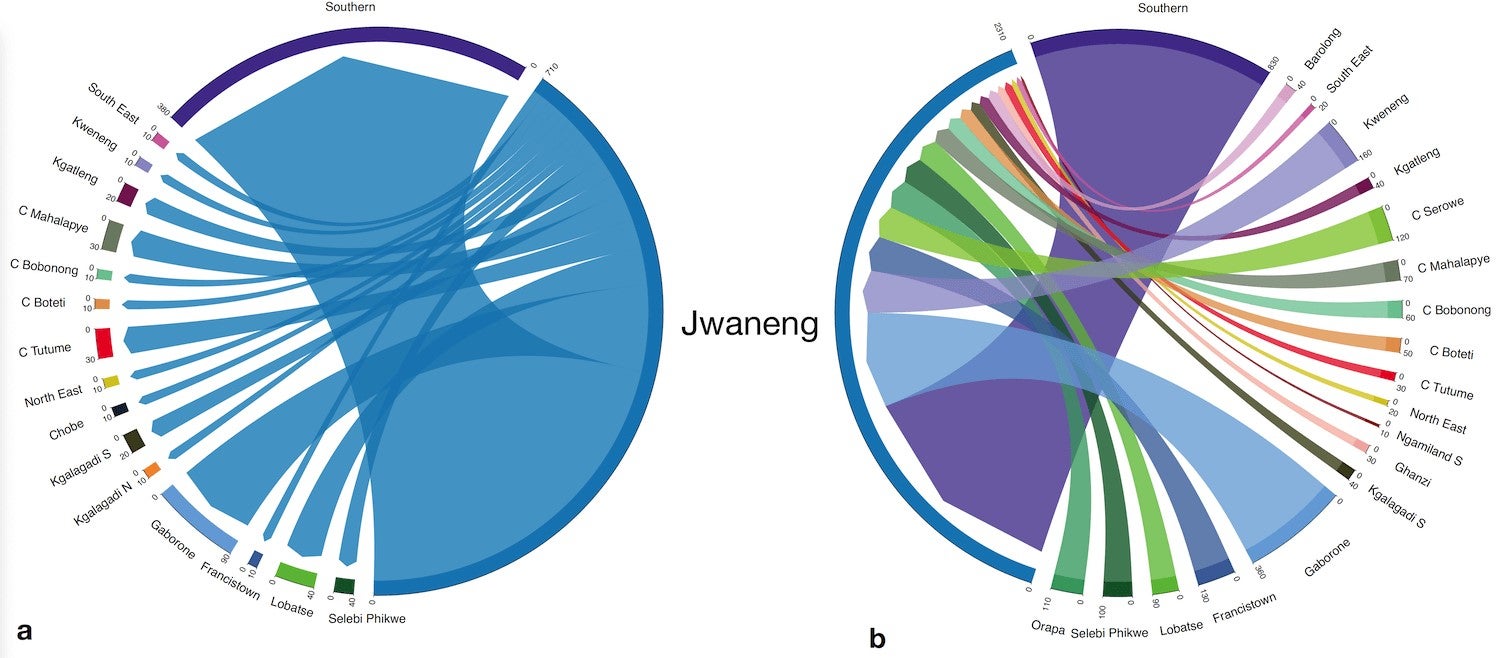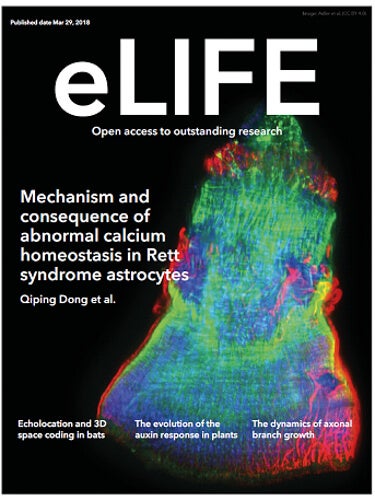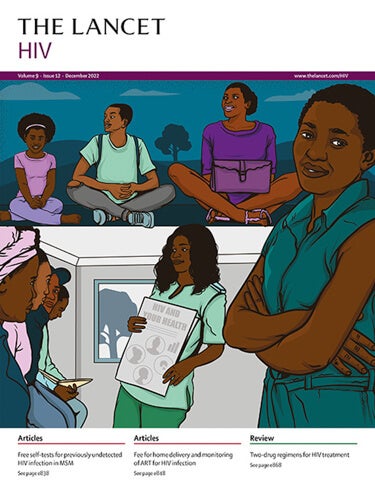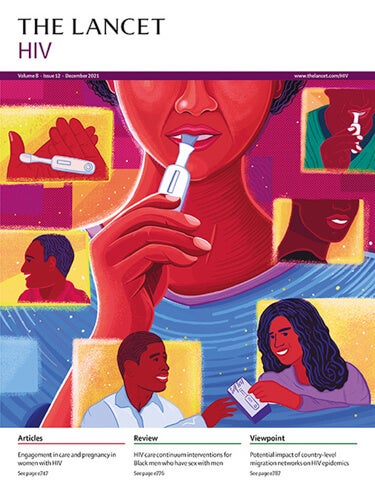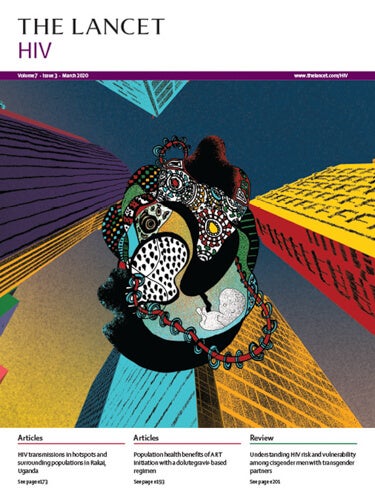Mobility
Philosophy
Current mathematical models of HIV epidemics, as well as “real-world” health policies, are based on the implicit assumption that populations are static. In contrast, our research is based on the idea that human mobility is an important driver of HIV epidemics, and is undermining current control strategies. We focus on the effect of mobility on both short-term, and long-term, HIV transmission dynamics in sub-Saharan Africa.
Recently Published Project
Understanding the historical development of generalized HIV epidemics
The majority of people with HIV live in sub-Saharan Africa, where HIV epidemics are generalized. For these epidemics to develop, populations need to be mobile. However, population-level mobility has not yet been studied in the context of the development of generalized HIV epidemics. In this project, we analyzed historical migration data from Botswana, which has one of the most severe generalized HIV epidemics worldwide; in 2021, HIV prevalence was 21%. The country reported its first AIDS case in 1985 when it began to rapidly urbanize. We hypothesize that, during the development of Botswana’s epidemic, the population was highly mobile and there were substantial urban-to-rural and rural-to-urban migratory flows. We tested this hypothesis by conducting a network analysis using historical (1981 to 2011) micro-census data from Botswana. Our analysis provided strong support for our hypothesis.
The figure shows, for 1981, the connections (in terms of the number of people moving) between a mining town (Jwaneng) and districts in Botswana. It can be seen that there was a very high connectivity between all areas of the country, and that this was a result of (a) out-flows and (b) in-flows of migrants.

